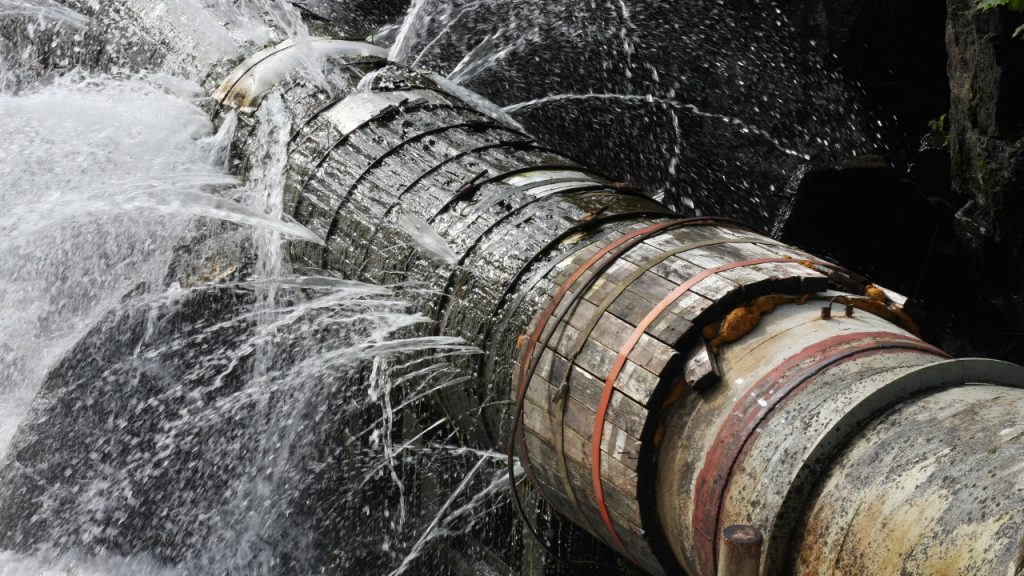123Fab #53
1 topic, 2 key figures, 3 startups to draw inspiration from

On July 2nd 2021, a fire on the surface of the Gulf of Mexico erupted after a gas leak from an underwater pipeline sparked a blaze. Although the fire was extinguished 5 hours later by state-owned oil company Pemex and the company claims that there was no leak, hundreds of such industrial accidents occur every year worldwide.
In recent years, the reliability of the power grid has often been put in the spotlight. Grid operators are faced with 4 main challenges:
- The aging infrastructure: the vast majority of energy transmission and distribution lines, as well as oil & gas pipelines, were built in the second half of the 20th century with approximately a 50-year life expectancy. The network is therefore aging and many lines have exceeded their intended lifespan. According to Black & Veatch, 60% of electric distribution lines in the US have surpassed their 50-year expectancy.
- The severe weather events: aside from aging, the grid was not originally engineered for severe weather events. According to a study carried out by the EU, annual spending in Europe to fix climate change-related damage to energy infrastructure was estimated at €500 million in 2018. This figure was set to grow exponentially by 400% by 2020, by 860% by 2050 and by 1,600% by 2080.
- The increasing demand: global demand for energy is increasing rapidly, because of population and economic growth. The US Energy Information Administration (EIA) projects a 48% increase in global energy consumption between now and 2040. New infrastructure will need to be built to absorb future energy demand, especially in remote areas.
- The integration of renewables: the transition from traditional fuel to renewable energy sources is putting the grid under further strain. Firstly because most renewable sources are located remotely requiring additional long-distance, high‐capacity transmission to match supply with demand. Secondly, renewables complicate the management of the grid because they are variable – they depend on the weather.
In other words, traditional power grids are not designed to meet today’s emerging trends, such as the greater penetration of distributed generation resources, the need for greater resilience and renewable intermittency. Thus, there is a real need for utilities and developers to make substantial investments to replace, upgrade and expand new and existing transmission and distribution (T&D) infrastructure.
New technologies are emerging to transition to a new type of grid, a modern one, with the potential of addressing today’s grid challenges. These include dynamically optimizing grid operations and resources, detecting and mitigating disturbances, integrating diverse generation sources, providing strong protection against physical and cyber risks, etc. Among the segments of the value chain, the greater focus of the smart grid is on distribution. Transmission systems are already equipped with extensive sensing and control, which are enhanced by newer technologies (synchrophasors, associated controls, decision-support systems, etc), whereas distribution needs emphasis.
Some innovations have already begun to change the landscape. In the electric grid, technology has moved from electromechanical meters to automated meter reading (AMR) to advanced metering infrastructure (AMI). These smart meters are capable of sensing energy, voltage, power quality and more. AMI meters allow utilities to perform actions at a level unforeseen in the past, so much that the scope for innovation in the data space remains huge. Energy storage has also opened up opportunities to store energy when it is cheap and discharge it when it is expensive. RTE, France’s transmission system operator, is running a pilot to automate storage and injection orders via a smart grid platform controlled by an intelligent robot. In the oil & gas industry, pipeline leakage technologies have emerged. In September 2020, BP announced a $5m investment into Sateltyics, which uses machine learning and spectral imaging to predict and counteract dangerous pipeline leakages. On the flip side, the multitude of sensors and connected devices has resulted in many points that can now be hacked. The ransomware attack on Colonial Pipeline Co. two months ago ignited concerns about cybersecurity in Europe, where lawmakers are drafting laws to improve the way energy companies protect themselves against hackers.
The innovations brought to market by startups are mainly software. In fact, experts say that much of the value to be captured by smart grids lies in the data and software improving operations and maintenance. Startups using software and new materials to compensate aging infrastructure include:
- AiDash uses machine learning algorithms to analyze satellite images and infer the encroachment of vegetation on power lines to avoid outages
- Grid4C uses AI to detect, diagnose and predict malfunction and inefficiencies for assets on the grid, without the installation of expensive hardware
- Depsys develops power-grid modular systems designed to help grid operators to seamlessly integrate the increasing amount of renewable energy sources
- ALD Technical Solutions repairs, retrofits and upgrades offshore and onshore infrastructures using high quality and high-performance composite materials
Microgrids are another alternative to the aging energy grid. Fed by distributed sources, such as solar panels or diesel generators, this resilient alternative can keep a local network powered when the main grid is down – whether due to a cyberattack, a natural disaster or even a breakdown. Microgrids helped Australia get power back after the bushfires last year.
To conclude, the aging of energy infrastruction opens the way for more systemic thinking. Rather than replacing the existing infrastructure, a national reflection is underway to redesign an entirely new system capable of meeting the challenge of renewable energies grid integration. Given the high investment new infrastructure represents, budget prioritization upstream and selection of the technologies to be implemented will be crucial.
2 Key Figures
780 smart grid startups
registered by Tracxn
Smart grid market expected to reach $92.1 Bn by 2026
The smart grid market is estimated at $29.3 Bn in 2019 and is expected to reach $92.1 Bn by 2026, at a CAGR of 17.8%
3 startups to draw inspiration from
This week, we identified three startups that we can draw inspiration from: Grid4C, Envelio, and Scale Microgrid Solutions.

Grid4C
Grid4C’s solutions use smart meter and IoT data to predict, detect, and diagnose faults and inefficiencies for grid assets and home appliances, without the need for hardware or sensor installations.

Envelio
Envelio’s platform helps network providers integrate renewable sources and electromobility by offering a digital assistance system for technical planning and operations processes.

Scale Microgrid Solutions
Scale Microgrid Solutions delivers sustainable and reliable power to commercial and industrial customers by deploying unique, fully-financed microgrids and distributed energy solutions.
